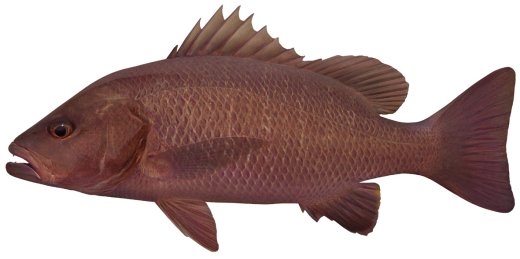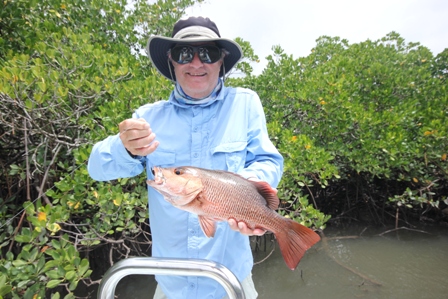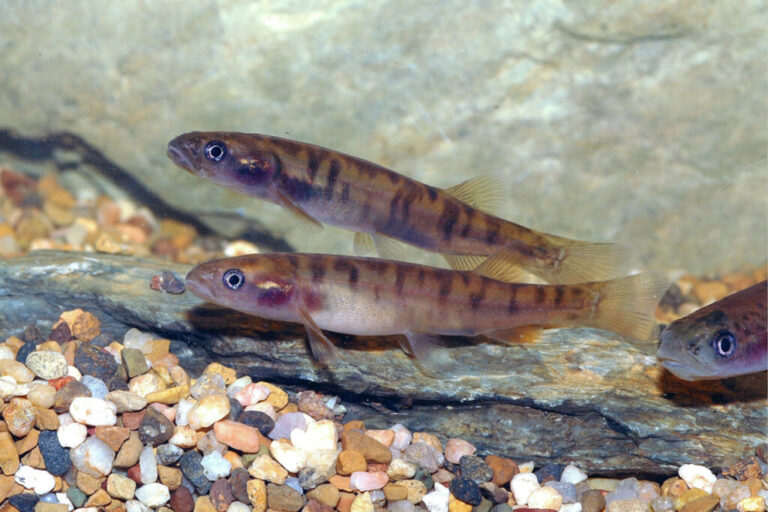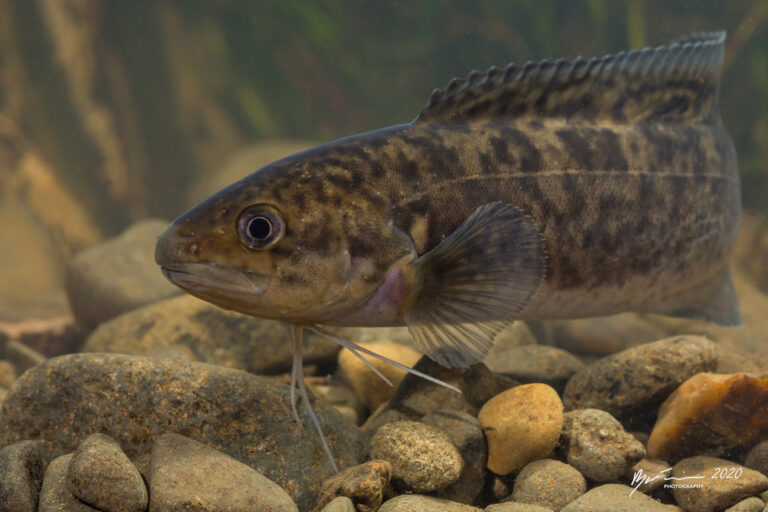
Mangrove Jack inhabit coastal waters and rivers from Shark Bay in Western Australia through Torres Straight and Queensland, south to Lake Illawarra in NSW. They are occasionally found in more southern estuaries of NSW. In NSW they tend to be seasonal captures and can really be reliably targeted only in the summer months when water temperatures approach or exceed around 22°C.
The colour of Mangrove Jack varies from bright reddish-brown to dark olive-brown. Fins have a pinkish hue, with the tail generally a darker shade. Each scale has a dark spot, which gives the appearance of criss-crossing lines on the body. Juveniles possess a blue line below the eye, which is also often evident on the adult.
Colouration of the Mangrove Jack ranges from burnt orange, to copper, to bronze and dark reddish-brown, depending on its age and environment. Younger fish caught in estuarine areas are often darker than older fish taken from offshore reef areas, and exhibit lighter vertical bands down their flanks.
They possess distinctive canine teeth at the front of the mouth which are adapted for seizing and holding their prey. The large and very sharp canine teeth are a distinctive trademark of lutjanids and cause nasty injuries to the unwary angler.
Estuary fish do not appear to grow much bigger than 50 cm and a 3kg specimen is bragging material. Upon reaching this size jacks migrate out to inshore reefs where they can reach a maximum length of approximately 1.2m and 16kg in weight.
Like Barramundi, Mangrove Jacks live in freshwater before leaving for full salt environments but should they be unable to reach the sea they live long healthy lives in freshwater but cannot reproduce.
Mangrove Jacks feed on smaller baitfish, prawns, crabs, etc. ambushing prey from the safety of overhanging structure, logs, reefs or bommies. When the tide is low, they can be found in deeper sections of a river, particularly in deep rocky holes and around submerged timber.
To pursue Jacks on the fly an 8/9 weight rod is ideal. Your casts will be short and won’t need a lot of backing on the reel as a jack will rarely peel you to the backing and usually if he does he’s safe back home and knitted your leader into a cat’s cradle. If you’re lucky you’ve only lost a fly and some self-esteem. Leaders should be around 8-9 feet of 20-30lb monofilament from fly to the fly line. Tapered leaders aren’t required as a neatly rolled outcast isn’t essential.
As for suitable flies – popper flies, Deceivers, Clousers, crease flies, Gurglers, Dahlberg divers, or any Barramundi fly. Flies should always be guarded as casting deep into the timber and twitching them through it is the way to go. Jacks don’t really like to venture too far from the protection of the structure they call home so you can re-cast once you are a couple of metres from cover rather than stripping all the way to the boat (this applies to NSW – not in the Tropics where an unseen Barra may follow a fly to your rod tip).




